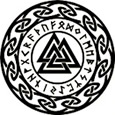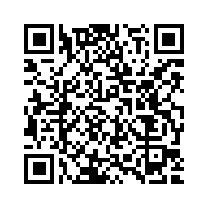
Author : Diky Andrey Iv.
Title : Jews in Russia and in the USSR
Year : 1967
Link download : Diky_Andrey_Iv_-_Jews_in_Russia_and_in_the_USSR.zip
As the title of this sketch implies, it is limited by time and territory. By limited times, I mean by those three periods when the Jewish ethnic group lived within the territory of the Russian State. The first period was Kiev Russia era; the second period, when Western and Southwestern Russia was under the power of Poland; the third, during the Russian Empire, renamed the USSR. It is limited by territory by the lands held by the Russian people, and created by the State of Russia as it existed then. Any other era or occurrences beyond aforementioned boundaries are of no significance to this sketch. During the two thousand years of their sojourn, many different Jewish groups were dispersed throughout different countries, different nationalities, and different eras. Inevitably, wherever these sects resided, conflicts arose between the Jews and the different local populations. Ultimately the “Jewish Question” or “Judaeophobia” developed, which from the middle of the Nineteenth Century came to be known as “anti-Semitism”. “Anti-Semitism” is not an entirely correct usage, as Semites include not only people of the Jewish faith; but today the word is used specifically in reference to anti-Jewish feeling, replacing the more exact terminology of “Judaeophobia” which was used for centuries prior to the emergence of the former word. “Judaeophobia” has a more precise meaning than “anti-Semitism”, designating negative, unfriendly feelings solely towards the Jewish people. “Judaeophilia”, on the other hand, would indicate a proclivity and friendliness towards the Jews. The causes of “Judaeophobia” that existed in pre-Christian times, and which still exist now, are beyond the framework of this historical sketch, and therefore will not be the subject of examination here. Moreover, the existing opinions of different researchers concerning the cause of the well-known mutual repulsion of the Jews by non-Jews are diametrically opposed. Some claim the problem lies within the nations where Jewish people have resided and still do reside. Others look for the causes of “Judaeophobia” within the Jews themselves. Spinoza aptly phrased it when he said, “They carry it with themselves”. Throughout the centuries much has been written on the subject of “Judaeophobia”, and its reaction towards the Jews. Much less, however, has been written on the causes of “Judaeophobia” despite the fact it is well-known that “Nothing occurs without cause”, (”Nihil sine causa” — N. S. C.). The volume and character 0f this sketch does not permit elaboration on the causes of these conflicts, however, bypass them silently is also impossible. It is therefore suggested that the reader become acquainted with the analysis of this question, dealt with in the second part of this book. The title of this analysis is, “Anti-Semitism in the Ancient World”, by Professor Solomon Lourie. In this discussion the author deals with the causes which used to promote and still do promote “Judaeophobia” both before and after the death of Christ. In the course of this account there is some indirect mention of the causes of discord in the Russian-Jewish relationship that can neither be denied nor ignored. This discord, or mutual distrust, and the subsequent repulsion of both parties by each other, began with the first appearance of the Jews in Russia. All three major branches of the Russian people, the Great Russians, the Malorussian-Ukrainians and the Byelorussians are implicated in this “Judaeophobia”, but not without cause. This discord in its broadest sense existed not only between the Russians and the Jewish ethnic group but also between the entire population of the USSR and the Jews, throughout the country. This discord and mutual mistrust and the subsequent repulsion of the Jews by the entire population of the USSR is labeled “anti-Semitism”. The initiative in this discrimination is cast upon the whole non-Jewish population of Russia, the Jewish people falling heir by default to the sole of the silent and abused sufferers. Everyone else is to blame, but the Jews themselves are always assumed to be in the right. No serious researcher can agree with stereotyped suffering on the part of the Jews, with no one to blame but the various native populations with which they became associated. Yet there is scarcely anyone who would try to establish the causes for this, as had been done by Solomon Lourie in his research. The majority chooses to remain silent about the true causes of these conflicts, preferring to let the quilt lie with the non-Jews, and therefore, examines only the consequences, the outward manifestation which is labeled “anti-Semitism”. “The timid and double-faced” Jews and non-Jews recommend that the causes be ignored, for fear that these talks of discrimination and defamation on the grounds of race and color only strengthen the spread of mutual prejudice, and therefore, do nothing to clarify the true historical issues. This statement was made by the former secretary of the All Russian Constituent Assembly, Mark Vishniak, in his essay, ”International Convention Against Anti-Semitism”, published in the anthology entitled ”Jewish World”, (p. 98, New York 1939). Vishniak himself was the initiator of this convention; however, he does not specify in any part of his work, how to understand this “anti-Semitism” in proper perspective. It is possible that he is incapable of understanding that there exists a basic difference between Jewish and non-Jewish races which goes far beyond race and color of the skin, and can be defined as “something else”? This basic difference had been formulated thirty years before Mark Vishniak raised this question on an international scale, by Professor Solomon Lourie who said the “inner aspect” is that which distinguishes all Jews from non-Jews, regardless of skin color, hair color or any other trait related to their origin. It is this “something else”, this “inner aspect” that explains the present conflict between the Jews, the Semites, and the Arabs (a fact that cannot be explained if one accepts Mark Vishniak's theories on the subject). Everyone knows that these races are of basically the same origin. In what then do they differ? Is it not in this “inner aspect”? It is this very thing that alerts the Jews and non-Jews, including the Russians, to a state of mutual distrust. Full frankness does not exist between the Russians and Jews, and this was aptly phrased by Solomon Schwartz, a noted author, when he said in his book ”Anti-Semitism in the Soviet Union” on p. 41, “that what a Russian would say to a Russian, he would not say to a Jew”. This is very true, but alternatively, so is its converse: “what a Jew would say to a Jew he would not say to a Russian”. He did not attempt to explain, however, the cause of this phenomenon. He felt the cause of this distrust needed no explanation. The statements of the three Jewish writers quoted previously, who received their education in Russian universities and occupied notable positions in Russian cultural and political life, deserve special attention. Their statements are evidence themselves of this mutual distrust, a suspicion that quite often overflowed into relations and created possible conditions for all kinds of conflicts. This phenomenon is not specific to the Russian-Jewish interrelationship; in fact, the conflict between the Jews and the entire multitribal population of Russia-USSR existed for the whole period of time that the Jews resided upon Russian soil, or any other soil foreign to them. Sometimes these mutually scornful and contemptuous relations between the Jews and the native population intensified and overflowed into pogroms, persecutions which had few limits in their intensity. Sometimes when a “thaw” in these pogroms occurred, the opportunity for material improvement and participation in political spheres of a country by the Jews arose. There were even times when the Jewish people ingratiated themselves with the rulers of these countries and conducted their own personal persecution upon the native peoples. These persecutions were carried out upon the people who in the Jewish opinion were ill-disposed towards them. They carried out this extermination of the native people in the manner that is described in the Bible – “The Book of Esther”. History also testifies to incidents where the Jewish ethnic group exterminated even their own tribesmen whom they believed to be renegades, with the consent and co-operation of the ruler of the country involved. The Jews were able to convince the ruler that renegades who changed their Judaic beliefs for those of Roman gods did it for personal profit; therefore they could not be trusted, as they would just as easily betray the emperor (in this case Ptolemy) as they had betrayed Jehovah. All these conflicts and hesitations in the interrelationship between the Jews and the native population were of local origin, without overstepping the boundaries of any one country. One country would expel them, another would let them in; one ruler would be kind to them, while others only “tolerated them”. For this reason, the “Jewish Question” that arose in every country where the Jews resided had little importance in the life of a country or its people. They did not have great significance, since Jewish groups were scattered throughout different countries and never exceeded several hundred thousand in any country. This, however, was not the case in Russia or the USSR. At the beginning of the twentieth century, the overwhelming majority of the world's Jewry lived within the boundaries of Russia-USSR, numbering more than 6 million. This huge sector of the world's Jewish population lived according to the law of their Judaic religion and isolated itself from the rest of the native population. This isolation was self-imposed, and not inflicted, compulsory ghetto living. It was a time however, when the Jewish people in Russia were striving through all possible channels to participate in all the spheres of the country's life, an endeavor in which they became quite successful. At the beginning of the Twentieth Century, Russian Jewry was the centre of the Jewish religion, and its people's conscience. This centre, which gave direction to the life and the activities of the entire Jewish Diaspora, created purely Jewish ideological currents and political parties consisting solely of Jewish members, and produced from their ranks political personalities who became leaders of all Jewry. In the late 1920s, Russian Jewry had turned from the insignificant four-percent minority limited in its rights into ruling class capturing most of the ruling positions in all spheres of Russian life. The occurrence was something unheard of throughout the whole history of mankind: an unequalled historical precedent. The final point deserving special attention is the reaction of the whole free world, its press, and its public opinion, towards the change in the social conditions of the Jews in Russia, at the end of the second decade of the Twentieth Century. The reaction towards the change that occurred thirty years later after the Second World War must also be considered. In less than one year, after the fall of the Czarist Regime in Russia, the Jewish ethnic minority of foreign origin had become the ruling majority, an incident unparalleled in human history. It was then that world public opinion, the greater part of its press, and even social and political leaders of that time, ignored this change and remained silent. They remained silent about the fact that four Jews concluded the Brest-Litovsk peace in the name of Russia, that all Russia's representatives on the League of Nations were also Jews, and that many of the leading political and social leaders of Russia were Jewish. Only a small number of uninfluential foreign press bodies saw and printed the truth about the exceptional change in the Jewish situation in Russia, and then only seldom and in a timid fashion. ...

Tourney Phillip - What I saw that day
Authors : Tourney Phillip F. - Glenn Mark Title : What I saw that day Year : 2011 Link download :...














